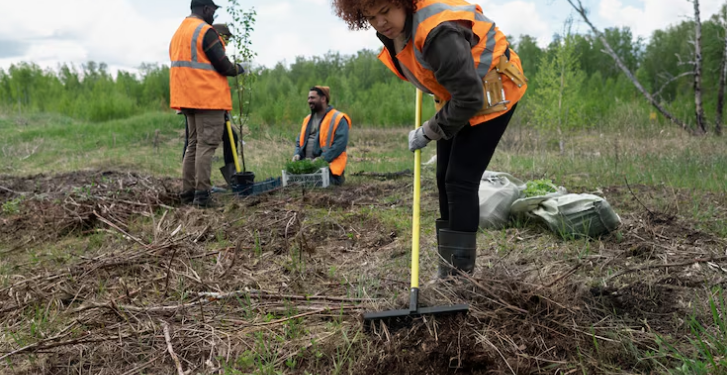Across cities and industrial areas, environmental concerns have become a growing priority. Contaminated soil, polluted water, and hazardous materials left behind from industrial activity can create risks for both people and the environment. This is where environmental remediation plays a vital role. By removing or neutralizing pollutants, remediation helps restore properties to safe and usable conditions while protecting surrounding communities and ecosystems.
What Is Environmental Remediation?
Environmental remediation refers to the process of identifying, managing, and cleaning up contamination in soil, groundwater, sediment, or surface water. The goal is to eliminate or minimize risks to human health and the environment. These projects are often necessary when land is being repurposed for new construction, when hazardous spills occur, or when older industrial sites need to be brought into compliance with environmental regulations.
Typical contaminants addressed through remediation include:
- Heavy metals such as lead, arsenic, and mercury
- Petroleum hydrocarbons from fuel leaks or spills
- Hazardous chemicals from manufacturing processes
- Asbestos and other hazardous building materials
- Contaminants from landfills or waste disposal sites
Methods of Environmental Remediation
The strategy chosen depends on the type and extent of contamination. Common methods include:
- Soil Excavation and Disposal – Contaminated soil is physically removed and transported to approved disposal sites.
- Soil Washing – A treatment process that separates contaminants from soil using water or chemical solutions.
- Bioremediation – Uses microorganisms to naturally break down hazardous substances into less harmful materials.
- Groundwater Treatment – Pumping and filtering contaminated water to remove pollutants.
- Containment – Installing barriers or liners to prevent contaminants from spreading to surrounding areas.
Each method is carefully selected based on the site’s conditions, regulatory requirements, and long-term goals for redevelopment.
Why Environmental Remediation Matters
Beyond meeting compliance standards, remediation has a significant impact on public health and property value. Contaminated land can expose residents to toxins, affect nearby water supplies, and harm wildlife habitats. Left untreated, pollution can spread, creating larger and more expensive problems in the future.
By addressing contamination early, remediation projects help:
- Protect human health from exposure to harmful substances
- Restore property value for redevelopment opportunities
- Prevent further damage to soil and groundwater systems
- Support sustainable growth in communities
The Role of Professionals in Remediation
Because remediation involves complex testing, engineering, and compliance with strict environmental laws, it requires experienced specialists. Professional teams conduct detailed site assessments to identify pollutants and determine the most effective cleanup strategy. They also manage safety protocols, handle hazardous waste, and ensure that all work meets local, state, and federal environmental regulations.
Hiring skilled professionals ensures that remediation projects are carried out effectively, safely, and with long-term success in mind.
Applications of Environmental Remediation
Remediation services are vital across many industries and property types, including:
- Residential Areas – Removing lead, asbestos, or fuel contamination from homes and neighborhoods.
- Commercial Properties – Preparing old industrial sites for redevelopment into offices, retail, or housing.
- Manufacturing Sites – Cleaning up hazardous byproducts left from production processes.
- Government and Municipal Projects – Restoring landfills, water treatment facilities, or public properties.
Whether it’s revitalizing an abandoned property or addressing contamination after an industrial spill, remediation creates opportunities for safer, healthier communities.
Building a Safer Future Through Remediation
Environmental remediation is more than just cleanup—it is an investment in public health, community safety, and sustainable development. By transforming polluted properties into usable spaces, remediation supports economic growth while reducing risks for future generations.
For property owners, businesses, and municipalities, addressing contamination is both a responsibility and an opportunity. Through professional remediation, land once considered unsafe can be restored and repurposed, creating long-term value and healthier environments.






